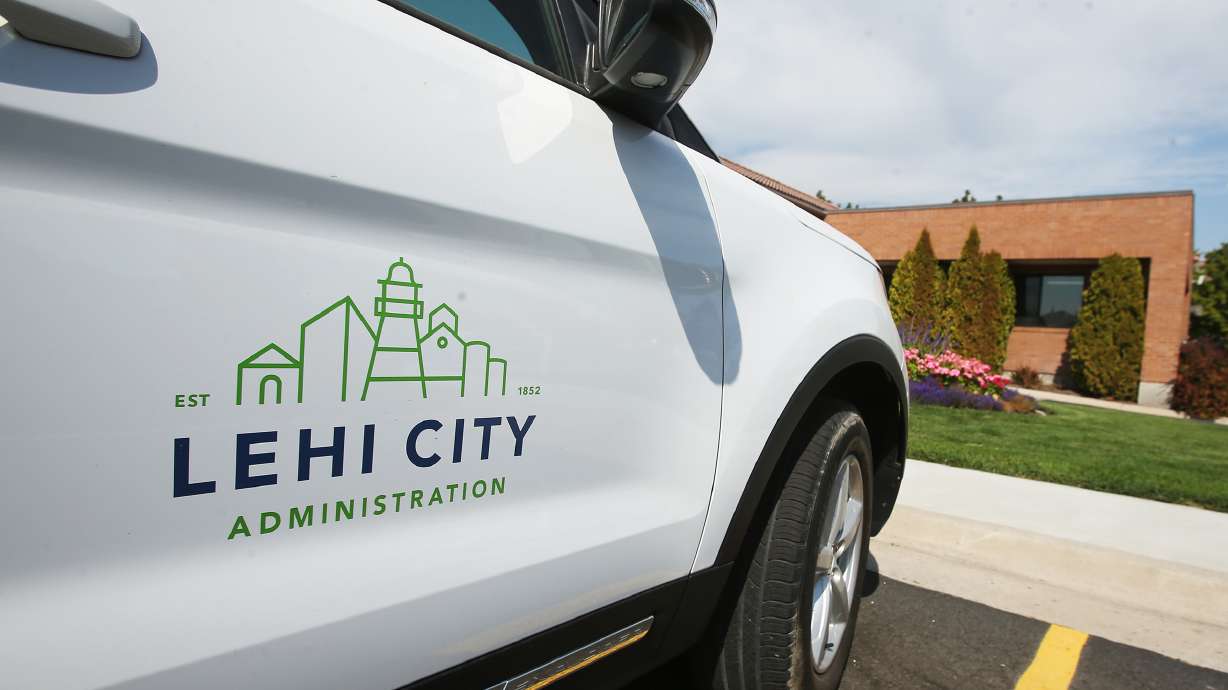Estimated read time: 3-4 minutes
This archived news story is available only for your personal, non-commercial use. Information in the story may be outdated or superseded by additional information. Reading or replaying the story in its archived form does not constitute a republication of the story.
LEHI — The Utah Taxpayers Association congratulated the city of Lehi on Wednesday after its city council voted unanimously the day before to withdraw from the Carbon Free Power Project, a cutting-edge nuclear power program that has sparked concerns about rising costs even a decade before it is scheduled to begin producing.
Lehi joins Logan in withdrawing from the agreement before the next phase of the project begins, which will lock member cities to further financial commitments.
"The Utah Taxpayers Association commends the city council members of Logan and Lehi for making the right choice for their ratepayers and taxpayers," the association said in a news release. It contends that municipal power companies "should not be taking the financial risk that is built into this project by essentially acting as venture capital investors bearing the risk of cost overruns and delays."
The Carbon Free Power Project is a cooperative effort between the Utah Associated Municipal Power Systems, or UAMPS, and other entities like the U.S. Department of Energy. Oregon-based NuScale is designing small modular nuclear reactors that aim to produce a safer, modern version of nuclear energy for UAMPS client cities.
UAMPS, an agency of Utah's state government, provides power to municipalities in six Western states including 36 Utah entities. It has a diverse portfolio of energy resources ranging from fossil fuels to renewables, and is scheduled to add the nuclear reactors to its list when they come online beginning in 2029. The nuclear plant is slated for construction on Idaho National Laboratory lands.
Thirty-five UAMPS members were invested in the Carbon Free Power Project, but the recent withdrawals leave 33 cities in the agreement. UAMPS spokesman LaVarr Webb said another utility — Wells Rural Electric Company — is scheduled to enter the agreement as of Oct. 1.
"It was expected that as UAMPS closely investigates this project that some members would opt out (and) other utilities would opt in," Webb said. "So to lose two members from the project is by no means a deal-killer. The project will go on."
He said it's possible other cities may opt to leave the agreement before the Sept. 30 deadline to do so. Once that deadline passes, municipalities will be committed to the next phase of the project and will not be able to leave for another several years.
"The members who are pursuing the project do believe that this will provide long-term, affordable, carbon-free energy to their customers, to the citizens of their cities," Webb said. "They're looking at it to complement wind and solar energy, which are intermittent."
Per the Taxpayers Association, the Utah entities that remain party to the Carbon Free Power Project are: Beaver, Blanding, Bountiful, Brigham City, Enterprise, Ephraim, Fairview, Fillmore, Heber City Light & Power, Holden, Hurricane, Hyrum, Kanosh, Kaysville, Monroe, Morgan, Mt. Pleasant, Murray, Oak City, Paragonah, Parowan, Payson, Santa Clara, the South Utah Valley Electric Service District, Spring City, Washington, and the Weber Basin Conservancy District.
In the release, the Taxpayers Association says it "strongly urges city councils to end their financial obligations to this project and for the citizens in these cities to advocate for withdrawal."
The Taxpayers Association has previously outlined its concerns about the project, and UAMPS has responded in kind. The association raised questions about the project's budget, risk and delays; it also worried about the project's low subscription rate, as only 30% of the reactor's projected output is currently claimed among UAMPS members.
In a written response, UAMPS contends that the cost of power to ratepayers will remain low, even if construction costs have increased. It said investing in a first-of-its-kind project "is actually a benefit, not a problem or weakness," and said it remains "confident that the project's 720MW of power will be fully subscribed."









